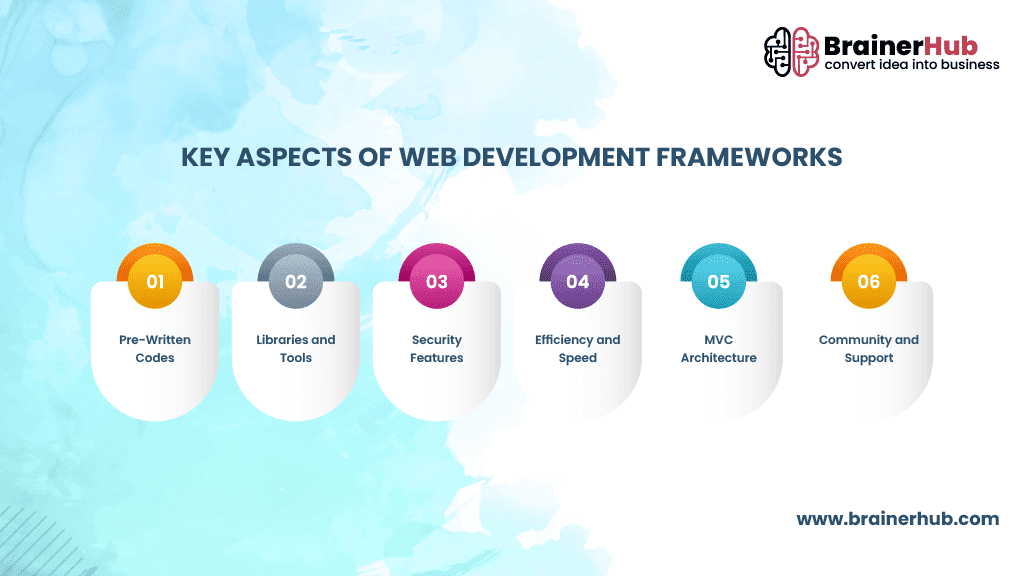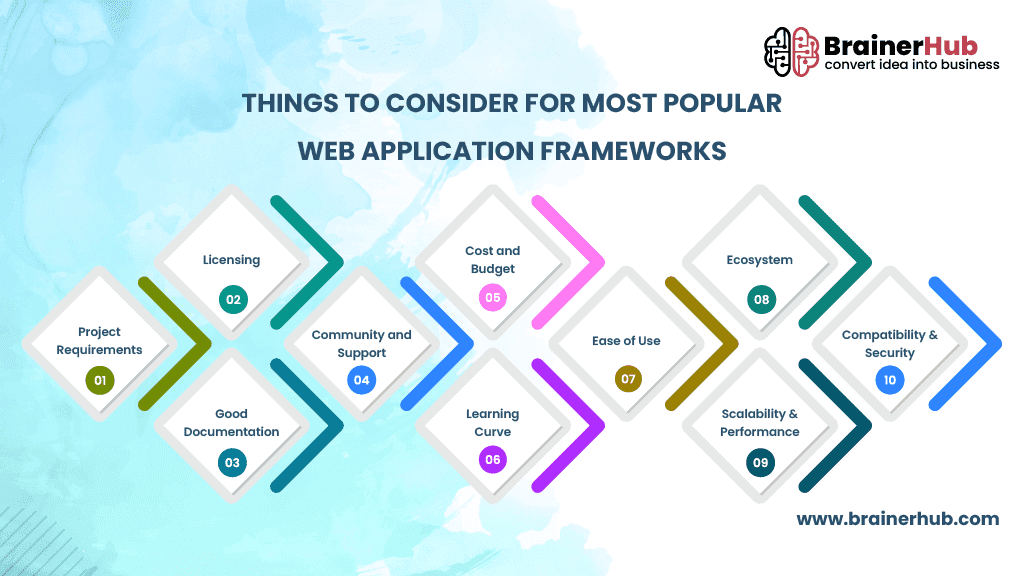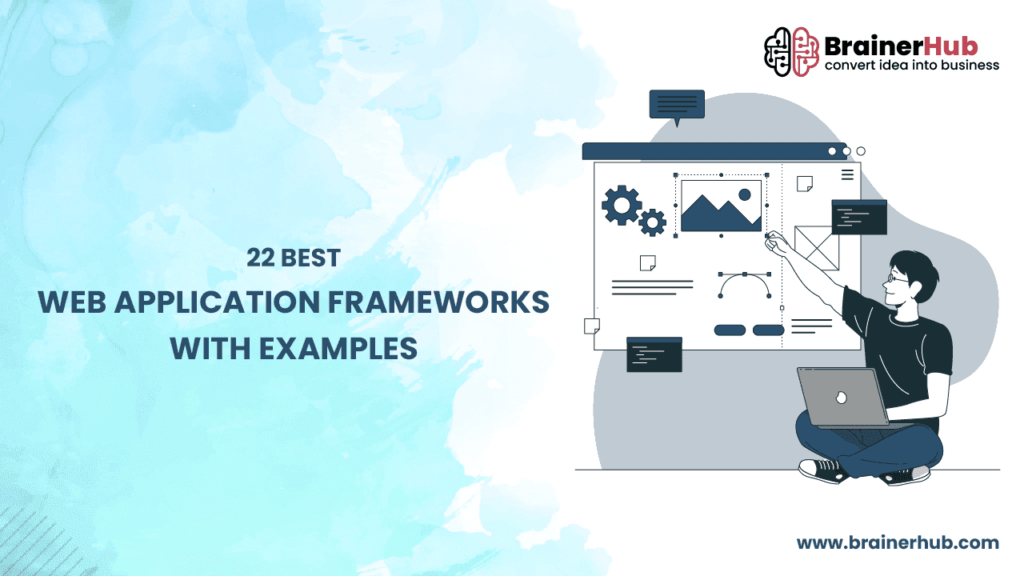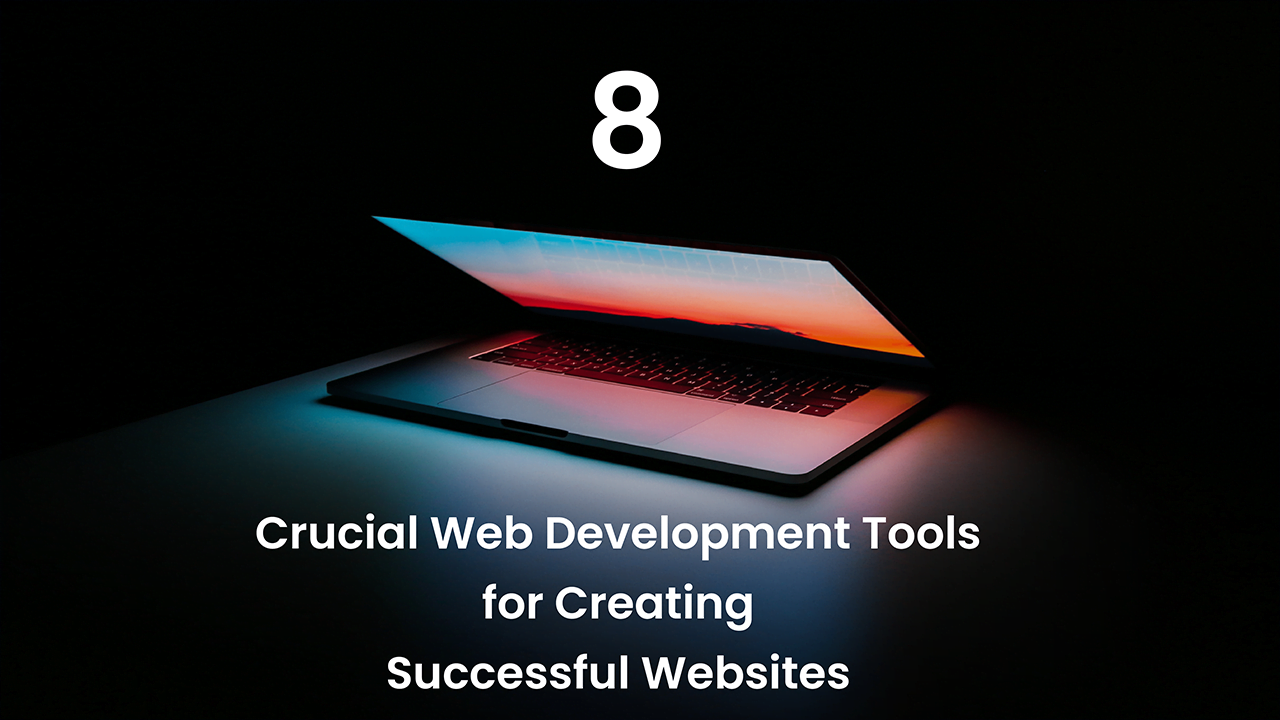What is a Web Application Framework?
A web application framework is specifically designed to support the development of web applications. It equips developers with tools, libraries, and APIs. It assists in facilitating the web development process. It enables developers to frame vital, scalable, and maintainable web applications. With a web application framework, developers can focus on writing the application’s business logic instead of worrying about low-level details such as –
- handling HTTP requests and responses,
- managing databases, and
- conducting user authentication and authorization.
Some prominent examples of web application frameworks incorporate Ruby on Rails, Django, Flask, and Laravel.
Why Use Web Application Framework?
Web application frameworks deliver a structure for designing active web applications. They propose a collection of libraries, tools, and patterns that make building and maintaining web apps more accessible. Frameworks deliver a standardized way of addressing routing, data handling, and rendering views. It saves time and lets developers concentrate on the outstanding features of their applications rather than reinventing the wheel for standard functionality.
Key Aspects of Web Development Frameworks
Web development frameworks equip a structured process for building web applications. They present tools and libraries that help developers write efficient and maintainable code. Vital aspects of these frameworks are their architecture, characteristics, community support, and user-friendliness.
1. Pre-Written Codes
Pre-written codes are essential for web development frameworks, enabling developers to accomplish tasks efficiently. They are designed to tackle common problems, save time, and increase productivity. Using pre-written codes, developers can focus on creating unique features and functionalities for their projects.
2. Libraries and Tools
Libraries and tools are essential components of the most popular web development frameworks. They provide pre-written code, functionality, and features that enable developers to create web applications efficiently. By using these resources, developers can save time and focus on the core logic of their applications. It ultimately leads to faster development times and better overall quality.

3. Security Features
Security features are essential to any web development framework, as they help protect web applications from various threats and vulnerabilities. These features include authentication, encryption, and access controls, which are critical to ensuring web resources’ confidentiality, integrity, and availability.
4. Efficiency and Speed
Efficiency and speed are crucial aspects of web development frameworks. These frameworks provide pre-built components and code libraries that eliminate the need to write code from scratch, leading to faster development and efficient use of resources. They often come with built-in tools for testing, debugging, and deployment, making the development process even more efficient.
5. MVC Architecture
MVC (Model-View-Controller) architecture is a crucial aspect of web development frameworks. It separates the application into three interconnected parts: the model, which manages the data and business logic; the view, which presents the data to the user; and the controller, which handles user input and updates the model and view accordingly. This separation of concerns makes developing, testing, and maintaining web applications easier.
6. Community and Support
Community and support are crucial elements of web development frameworks. An active community ensures developers get help, stay up-to-date with the latest trends, and collaborate with others. Robust support can help developers find and fix bugs, providing smooth and efficient development.
Do you know what the best frameworks for web application development are?
Scroll down to take a look at the Web Frameworks List.
Want to Develop a Web Application for Your Business? Our developers can create customized web apps based on your Requirement.
Best Framework for Web Application with Examples
One of the best frameworks for web application development is Ruby on Rails. It’s a popular choice because of its simplicity, flexibility, and quick development cycle. Another great framework is Django, a high-level Python web framework that encourages rapid development and clean, pragmatic design.
Best Framework for Web Development Backend
There are several best frameworks for web development backend, including Node.js, Django, Ruby on Rails, and Laravel, each with its strengths and weaknesses.
- Ruby on Rails
Ruby on Rails is a web application framework in the Ruby programming language. The latest version of Ruby on Rails is 6.1.3.1, and you can learn more about it by visiting their official website at https://rubyonrails.org/.
- Laravel
Laravel is an example of a PHP web application framework that uses the Model-View-Controller (MVC) architectural pattern. The latest version of Laravel is 8.0, and you can find more information about the framework at https://laravel.com/.
- Express.JS
Express.js is a popular Node.js web application framework that is written in JavaScript. The latest version of Express.js is 4.17.1, and the official framework link is https://expressjs.com/.
- Flask
Flask is a Python-based microweb framework that allows users to build web applications quickly and easily. The latest version of Flask is 2.0.1, and the official website for the framework is https://flask.palletsprojects.com/.
- Django
Django is a web framework that uses Python as its programming language. The latest version of Django is 3.1.3, and you can find the framework link at https://www.djangoproject.com/.
- NET core
ASP.NET Core is a web framework developed by Microsoft that uses C# as the primary programming language. The latest version of ASP.NET Core is 5.0, and you can find more information about the framework on its official webpage: https://dotnet.microsoft.com/apps/aspnet.
- Cake PHP
Cake PHP is a web development framework that uses PHP as its programming language. The latest version of Cake PHP is 4.2.2. Download the framework from the official website: https://cakephp.org.
- Spring Boot
Spring Boot is a Java-based framework that simplifies creating stand-alone, production-grade Spring-based applications. The latest version of Spring Boot is 2.5.4, and you can find more information about the framework, including downloads and documentation, on the official website at https://spring.io/projects/spring-boot.
- Koa
Koa is a web framework for Node.js that uses JavaScript as its Language. The latest version of Koa is 2.13.1, and the framework link is https://koajs.com/.
- Phoenix
Phoenix is a web development framework for the Elixir language. The latest version of Phoenix is 1.5.7, and you can learn more about it and download it from the official website at phoenixframework.org
- Meteor
Meteor is a full-stack JavaScript platform that allows developers to build web and mobile applications using a single language. The latest version of Meteor is 2.4.1, and you can find more information about the framework at https://www.meteor.com/.
- Next.JS
Next.js is a popular React-based web development framework that allows developers to build server-side rendered React applications. The latest version of Next.js is version 11. Access the framework via the official website: https://nextjs.org/.

Best Framework for Web Development Front-End
React is considered one of the best framework for web development front-end due to its flexibility, reusable components, and strong community support.
- Angular
Angular is a TypeScript-based open-source web application framework used for building single-page applications. The latest version of Angular is Angular 12, released in May 2021. Here is the framework link: https://angular.io/
- React
React is a JavaScript library that is known for its simplicity and flexibility. The latest version of React is v17.0.2, and you can access the framework link at https://reactjs.org/.
- Vue.Js
Vue.js is a progressive JavaScript framework used for building user interfaces. The latest version of Vue.js is 3.2.8, and you can find the framework link at https://vuejs.org/.
- jQuery
jQuery is a fast and concise JavaScript library that simplifies HTML document traversing, event handling, and animation. The latest version of jQuery is 3.6.0, and you can find the framework link at jquery.com.
- EmberJS
EmberJS is a JavaScript framework that follows the Model-View-ViewModel (MVVM) architecture. The latest version of EmberJS is 3.25.0, and you can find the framework link at https://www.emberjs.com/.
- BackboneJS
BackboneJS is a JavaScript library that provides a structured way of organizing code in a web application. The latest version of BackboneJS is 1.4.0, and you can find the framework link at backbonejs.org.
- Semantic-UI
Semantic-UI is a user interface development framework that uses HTML and CSS and has the latest version of 2.4.2. You can find more information about Semantic-UI and its documentation at https://semantic-ui.com/.
- Foundation
The Foundation is a responsive front-end framework built using HTML, CSS, and JavaScript. The latest version of Foundation is 6.6.3, and the framework link is https://foundation.zurb.com/.
- Svelte
Svelte is a language that compiles optimized JavaScript, making it a fast and efficient option for building web applications. The latest version is Svelte 3, and you can find the framework link at svelte. dev.
- Preact
Preact is a JavaScript library that uses a syntax similar to React and is commonly used for building user interfaces. The latest version of Preact is 10.5.13, and you can find more information about the framework and its documentation at https://preactjs.com/.

Advantages and Disadvantages of Web Application Frameworks
Web application frameworks provide developers with a structured approach to building web applications, which can save time and reduce errors. They also offer a range of tools, libraries, and features that can speed up development. However, using a framework can sometimes be limiting and require developers to learn new skills or restrict their ability to customize the application. Additionally, some frameworks may have security vulnerabilities or may not be suitable for certain types of applications. It’s essential for developers to carefully evaluate the advantages and disadvantages of using a web application framework before making a decision.
Things to Consider for Most Popular Web Application Frameworks
When selecting a web application framework, it is essential to consider factors such as its language, popularity, and support, scalability, and security features.
- Project Requirements
When selecting a web application framework, it’s important to consider project requirements such as scalability, security, and compatibility with existing infrastructure.
- Licensing
Licensing for popular web application frameworks varies, with some being free and open-source, while others require payment or have specific terms and conditions.
- Good Documentation
When it comes to web application frameworks, having good documentation is crucial. Some of the most popular frameworks with great documentation include React, Angular, Django, and Ruby on Rails.
- Community and Support
When choosing a web application framework, it’s important to consider the size and activity of its community, as well as the level of support available.
- Cost and Budget
When it comes to choosing a web application framework, it’s important to consider cost and budget. Some popular options include React, Angular, Vue, and Django.
- Learning Curve
Considering the learning curve for popular web application frameworks is important because it can impact the development timeline and team’s productivity.
- Ease of Use
Considering the ease of use for popular web application frameworks is important because it can impact the development timeline and team’s productivity.
- Ecosystem
When considering the ecosystem for web application frameworks, evaluating the community support, plugins, and available resources is essential to ensure long-term sustainability and success.
- Scalability & Performance
Frameworks’ scalability and performance are essential because they ensure that applications can handle increasing traffic and maintain optimal speed and efficiency.
- Compatibility & Security
Considering the compatibility and security of popular web application frameworks is essential to ensure the smooth functioning and protection of the web application.

How do Web Application Frameworks Work?
Web application frameworks work by delivering a standardized way to build web applications. They offer pre-built modules and libraries that can be used to manage standard web development tasks, such as handling user authentication, working with databases, and handling session data. These frameworks often use a Model-View-Controller (MVC) architecture that isolates business logic from presentation logic, making it easier to support and update the application over time.
FAQs
Choosing the proper web application framework can take time and effort. There are many factors to consider, such as
- the complexity of the project,
- development team’s experience and
- the framework’s scalability.
Some famous web application frameworks include Ruby on Rails, Django, Flask, Laravel, and Express.js. Each framework has benefits and flaws, so it’s significant to research and select the one that satisfactorily fits your project’s needs. Ultimately, the key is choosing a framework that lets you efficiently create a high-quality, scalable, and secure web application.
Determining the fastest web application framework can be subjective and dependent on various factors such as project requirements, development team skills, and available resources. However, some famous and widely used web application frameworks known for their speed and performance are Flask, Django, Express.js, and Laravel. Evaluating your project’s specific needs and conducting performance benchmarks before selecting a framework is recommended.
Determining the “hardest” web application framework can be subjective as it depends on various factors, such as the developer’s experience level, the complexity of the project requirements, and the availability of documentation and community support. However, some developers may consider frameworks such as AngularJS or React more challenging due to their steep learning curve and the need for a strong understanding of JavaScript. On the other hand, frameworks like Ruby on Rails or Django may be more accessible for developers proficient in their respective programming languages. Ultimately, the difficulty of a web application framework depends on the individual and their specific project needs.




